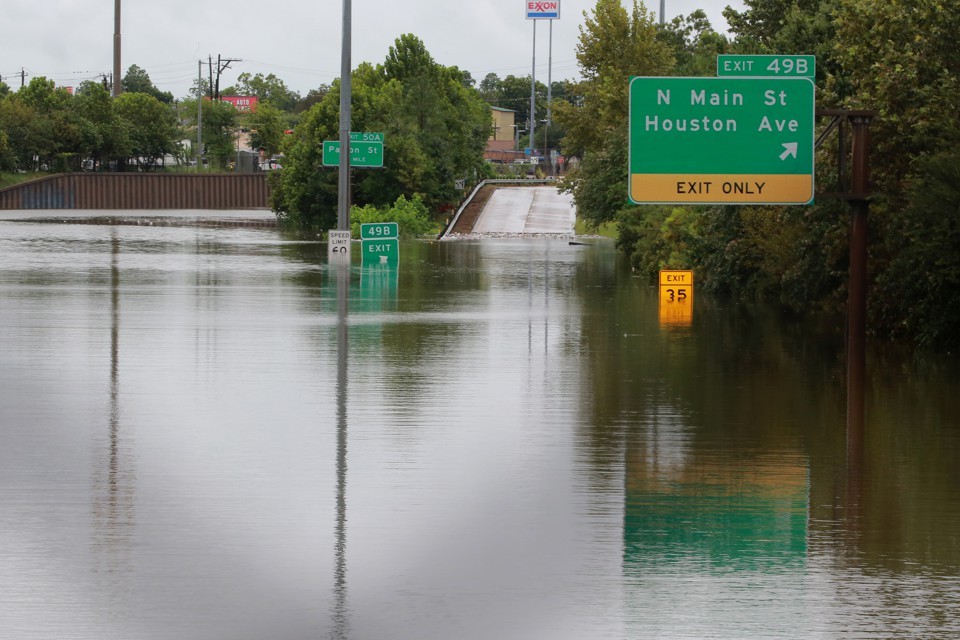Houston's Flood could be a style drawback
 Floods cause bigger property injury and additional deaths than tornadoes or hurricanes. And Houston’s flood is really a disaster of biblical proportions: The sky blank nine trillion gallons of water on the town among 2 days, and far additional would possibly fall before scientist dissipates, manufacturing the maximum amount as sixty inches of rain.
Floods cause bigger property injury and additional deaths than tornadoes or hurricanes. And Houston’s flood is really a disaster of biblical proportions: The sky blank nine trillion gallons of water on the town among 2 days, and far additional would possibly fall before scientist dissipates, manufacturing the maximum amount as sixty inches of rain.
Pictures of Harvey’s runoff ar agonising, with interstates turned to durable and mature rivers. From Katrina to Sandy, Rita to Tōhoku, it’s easier to imagine the flooding caused by storm surges shaped by hurricanes and tsunamis. In these cases, the flooding drawback seems to be caused by water breaching shores, seawalls, or levees. Those examples reinforce the thought that flooding could be a drawback of keeping water out—either through lucky dodging or engineering foresight.
But the impact of flooding, significantly in densely developed areas like cities, is way additional constant than a vast, natural disaster like scientist exposes. the rationale cities flood isn’t as a result of the water comes in, not specifically. It’s as a result of the pavement of civilization forces the water to induce back out once more.
There ar totally different forms of floods. There’s the storm surge from hurricanes, the runoff from snowmelt, the inundation of riverbanks. however of these examples solid flooding as associate degree occasional foe bent injury human civilization. In truth, flooding happens perpetually, in tiny and enormous quantities, when precipitation falls to earth. individuals simply don’t tend to note it till it reaches the proportions of disaster.
Under traditional circumstances, rain or downfall soaks into the planet when falling. It gets absorbed by grasslands, by parks, by residential lawns, by anyplace the soil is exposed. 2 factors will impede that absorption. One is giant quantities of rain in a very short amount of your time. the bottom becomes inundated, and also the water spreads call at accordance with the topography. The second is covering over the bottom therefore it cannot take in water within the 1st place. And that’s specifically what cities do—they remodel the land into developed civilization.
Roads, parking heaps, sidewalks, and different pavements, together with asphalt, concrete, brick, stone, and different building materials, mix to make fast surfaces that resist the natural absorption of water. In most of the u. s., concerning seventy five % of its expanse, but one % of the land is hardscape. In cities, up to forty % is fast.
The natural system is extremely smart at acceptive precipitation. however once water hits pavement, it creates runoff like a shot. That water needs to go somewhere. therefore it flows where the grade takes it. To account for that runoff, individuals engineer systems to maneuver the water removed from wherever it's originally deposited, or to deal with it in place, or maybe to use it. This process—the policy, planning, engineering, implementation, and maintenance of urban water systems—is referred to as stormwater management.
The combination of global climate change and aggressive development created an incident like this virtually inevitable.
According to my Georgia Institute of Technology colleague Bruce Stiftel, World Health Organization is chair of the varsity of town associate degreed regional designing and an professional in environmental and water policy governance, stormwater management sometimes entails channeling water removed from fast surfaces and also the structures engineered atop them. In different words, cities ar engineered on the idea that the water that will are absorbed into the land they occupy will be transported away instead.
Like bridges or skyscrapers designed connected sure masses, stormwater management systems ar formed among the boundaries of expected behavior—such as precipitation or riverside overrun events which may happen each ten or twenty five years. once these intervals ar exceeded, and also the infrastructure can’t handle the speed and volume of water, flooding is that the result.
Houston poses each a typical associate degreed an uncommon state of affairs for stormwater management. the town is gigantic, stretching out over 600 sq. miles. It’s associate degree epitome of the urban area characterised by yankee exurbanism, wherever out there land created development straightforward at the sides. not like city, Houston is well on top of water level, therefore flooding risk from storm surge inundation is low. Instead, it’s precipitation that poses the largest threat.
A series of slow rivers, referred to as bayous, offer natural evacuation for the world. To account for the knowledge of flooding, Houston has engineered evacuation channels, sewers, outfalls, on- and cross-country ditches, and detention ponds to carry or move water removed from native areas. after they fill, the roadways offer overrun. The dramatic pictures from Houston that show wide, interstate freeways remodeled into rivers seem like the reason behind the disaster, however they're additionally its answer, if not a perfect one. this can be additionally why evacuating Houston, a metropolitan space of six.5 million individuals, would are a terrible plan. this can be a town surpass cars, and causing its residents to sit down in snarl-up on the thoroughfares and freeways designed to become rivers throughout flooding would have doomed them to death by water.
Accounting for a 100-year, 500-year, or “million-year” flood, as some ar occupation Harvey’s aftermath, is tough and expensive. Stiftel confirms that it’s virtually not possible to style for these “maximal probable flood events,” as planners decision them. Instead, the hope is to style communities specified after they flood, they will face up to the unwell effects and support effective evacuations to stay individuals safe. “The Houston event appears like associate degree illustration that we have a tendency to haven’t patterned it out.